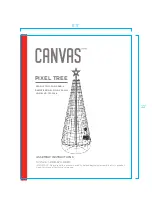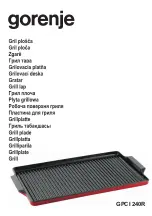
Dakota Micro, Inc.
DMOV
-
RH User Manual
Rev: 06/29/17 Page 7 of 12
Author: CNR
VIII.
EMISSIONS NOTIFICATIONS
This equipment has been tested and found to comply with the limits for a Class B digital device, pursuant to Part 15 of the FCC Rules.
These limits are designed to provide reasonable protection against harmful interference in a residential installation. This equipment
generates uses and can radiate radio frequency energy and, if not installed and used in accordance with the instructions, may cause
harmful interference to radio communications. However, there is no guarantee that interference will not occur in a particular
installation. If this equipment does cause harmful interference to radio or television reception, which can be determined by turning
the equipment off and on, the user is encouraged to try to correct the interference by one or more of the following measures:
Reorient or relocate the receiving antenna.
Increase the separation between the equipment and receiver.
Connect the equipment into an outlet on a circuit different from that to which the receiver is connected.
Consult the dealer or an experienced radio/TV technician for help.
In order to comply with FCC rules for protection against radio frequency exposure, this device must be installed in a manner to
provide a minimum separation of 20cm (8”) between the antenna and all persons.
Changes or modifications not expressly approved by Dakota Micro could void the user's authority to operate the equipment.
Canada
This device has been designed to operate with an antenna having a maximum gain of 15dBi. Antennas having a higher gain is strictly
prohibited per regulations of Industry Canada. The required antenna impedance is 50 ohms.
Operation is subject to the following two conditions: (1) this device may not cause interference, and (2) this device must accept any
interference, including interference that may cause undesired operation of the device.
To reduce potential radio interference to other users, the antenna type and its gain should be so chosen that the Equivalent
Isotropically Radiated Power (EIRP) is not more than that required for successful communication.
The installer of this radio equipment must ensure that the antenna is located or pointed such that it does not emit RF field in excess
of Health Canada limits for the general population; consult Safety Code 6, obtainable from Health Canada’s website
www.hc‐
sc.gc.ca/rpb
.






























